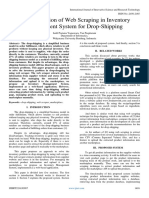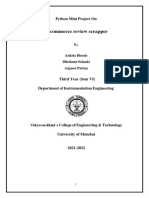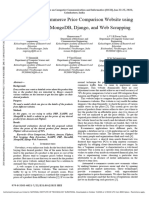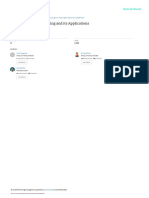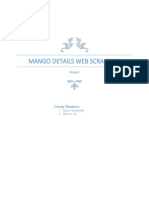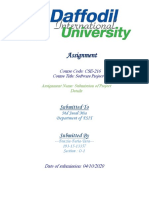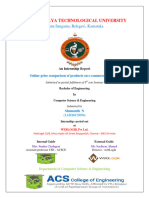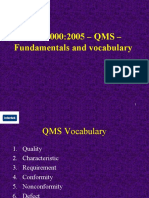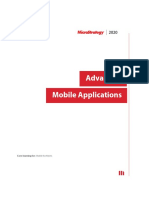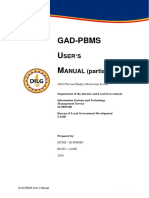0% found this document useful (0 votes)
9 views5 pagesFrom Web To File
This document presents a comprehensive methodology for creating a web scraper tailored for Indian e-commerce platforms, addressing challenges posed by dynamic content and anti-scraping measures. The proposed system utilizes technologies such as Beautiful Soup, Selenium, Flask, and React.js to efficiently extract, clean, and visualize product data while adhering to ethical scraping practices. Experimental results demonstrate the scraper's effectiveness in providing actionable insights from structured data, making it a valuable tool for businesses seeking to leverage e-commerce information.
Uploaded by
Mustafa SultanCopyright
© © All Rights Reserved
We take content rights seriously. If you suspect this is your content, claim it here.
Available Formats
Download as DOCX, PDF, TXT or read online on Scribd
0% found this document useful (0 votes)
9 views5 pagesFrom Web To File
This document presents a comprehensive methodology for creating a web scraper tailored for Indian e-commerce platforms, addressing challenges posed by dynamic content and anti-scraping measures. The proposed system utilizes technologies such as Beautiful Soup, Selenium, Flask, and React.js to efficiently extract, clean, and visualize product data while adhering to ethical scraping practices. Experimental results demonstrate the scraper's effectiveness in providing actionable insights from structured data, making it a valuable tool for businesses seeking to leverage e-commerce information.
Uploaded by
Mustafa SultanCopyright
© © All Rights Reserved
We take content rights seriously. If you suspect this is your content, claim it here.
Available Formats
Download as DOCX, PDF, TXT or read online on Scribd
/ 5











